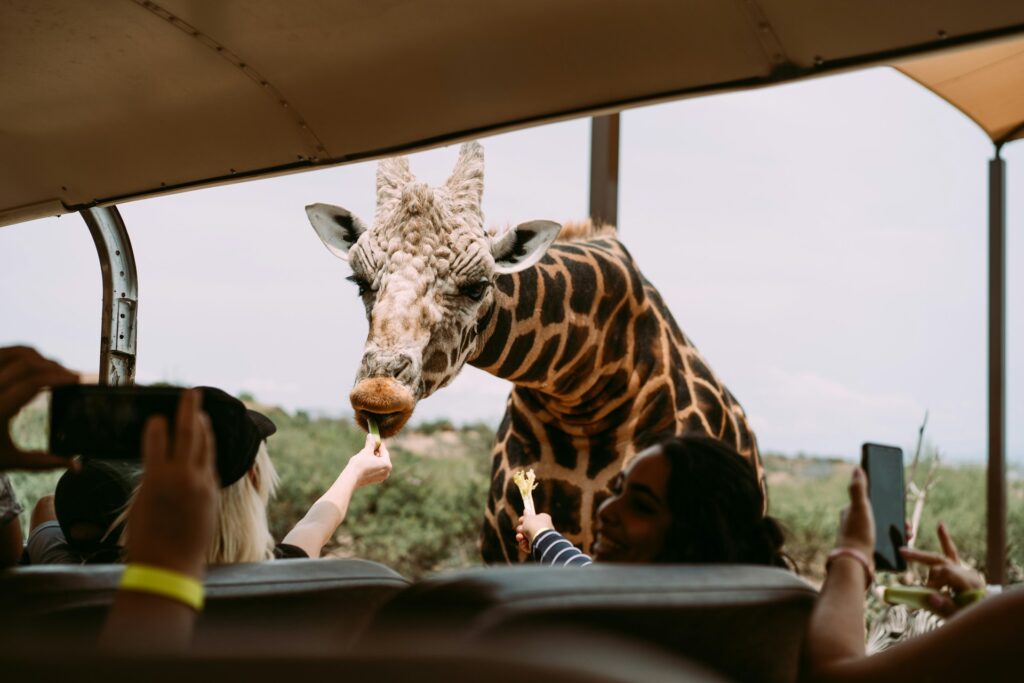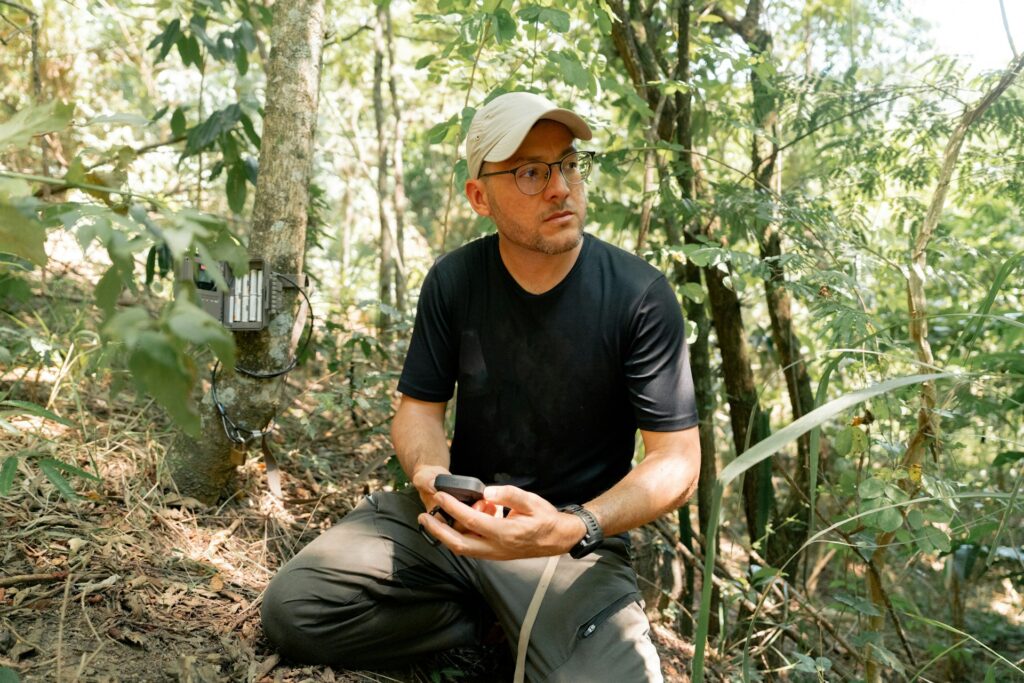Wildlife tourism has always had a certain draw—there’s something undeniably thrilling about seeing a wild animal up close.

Whether it’s spotting elephants on a game drive, watching whales breach in the ocean, or visiting a sanctuary for rescued animals, these experiences can be powerful, emotional, and even life-changing. However, in recent years, more and more travellers have started asking tough but important questions. What impact does this have on the animals? Is this ethical? Are these experiences helping or harming wildlife?
This change in awareness has led to the rise of ethical wildlife tourism—a form of travel that aims to respect animal welfare, support conservation, and educate visitors without exploiting the very creatures people come to see. And as climate change, habitat loss, and poaching continue to threaten global biodiversity, responsible tourism is becoming not just a personal choice, but a moral imperative.
The problem with traditional wildlife tourism

Not all wildlife tourism is created equal. Activities like elephant rides, selfies with sedated tigers, or marine parks that keep dolphins in captivity are still alarmingly common in some parts of the world. These experiences often prioritise profit over animal welfare, keeping animals in unnatural conditions or forcing them to perform for human entertainment.
A report by World Animal Protection found that over 500,000 wild animals are currently suffering in the tourism industry worldwide. The conditions in many of these venues are poor, and animals frequently experience stress, malnutrition, and physical harm. Visitors may not always realise the extent of suffering involved, especially when experiences are marketed as “interactive” or “educational.”
Captive wildlife attractions often perpetuate the illegal wildlife trade, breeding animals purely for tourist interactions with no intention of release. In some cases, animals are separated from their mothers at a young age, kept in isolation, or physically punished to ensure compliance. These practices are not just unethical—they’re unsustainable and contribute to wider biodiversity loss.
What ethical wildlife tourism looks like

Ethical wildlife tourism takes a different approach. It puts the animals first, ensuring that any interaction is safe, respectful, and non-invasive. This can include observing animals from a distance in their natural habitat, visiting reputable rescue centres, or supporting conservation-focused tours run by trained guides and researchers.
In ethical settings, animals are free to roam, not coerced or confined for human convenience. Programmes are often led by scientists, conservationists, or local communities with a vested interest in preserving both species and ecosystems. The goal is not just to watch animals, but to understand them—and to come away with a deeper sense of responsibility toward the natural world.
One example is the rehabilitation and release work done by The David Sheldrick Wildlife Trust in Kenya, which rescues orphaned elephants with the aim of reintroducing them to the wild. Another is whale-watching tours in Iceland or the Azores, where strict codes of conduct prevent boats from disrupting natural behaviours.
The role of accreditation and standards

It’s not always easy to tell the difference between ethical and exploitative tourism. That’s why third-party accreditation can be helpful. Organisations like the Global Sustainable Tourism Council (GSTC), the World Animal Protection’s “Wildlife. Not Entertainers” campaign, and the ABTA Global Welfare Guidelines provide guidance and vet tour operators.
Look for operators that are transparent about their practices, limit group sizes, employ local staff, and reinvest in habitat restoration or community development. A good sign? When tours prioritise education over entertainment, and when guides are trained in both animal behaviour and ethical wildlife viewing practices.
Travellers should also be wary of greenwashing—where companies market themselves as eco-friendly without genuine commitment. Detailed animal welfare policies, scientific partnerships, and conservation credentials are better indicators of a company’s ethics than vague buzzwords.
Supporting local communities through conservation

Ethical wildlife tourism doesn’t just benefit animals—it supports people too. In many areas, responsible tourism provides an alternative to industries that damage wildlife, such as illegal poaching, mining, or deforestation. By creating jobs and boosting local economies, ethical travel gives people a reason to protect animals rather than exploit them.
Community-run lodges, local guides, and conservation initiatives all benefit when tourists choose ethical options. This sustainable model ensures that the people who live closest to the wildlife are the ones who benefit most from its protection. In places like Namibia and Botswana, community conservancies have successfully combined wildlife conservation with local economic development, empowering Indigenous groups and safeguarding biodiversity.
The climate connection

Climate change and wildlife tourism are more connected than many people realise. Rising temperatures, extreme weather, and shifting habitats are putting additional stress on wildlife populations. Ethical tourism can help by funding conservation projects that monitor climate impacts, protect at-risk areas, and support species adaptation.
Moreover, choosing low-impact travel options—such as group safaris, eco-lodges, carbon-offset flights, and electric transport—can reduce the environmental footprint of wildlife tourism itself. According to a 2022 report from the United Nations Environment Programme, tourism contributes roughly 8% of global carbon emissions, with wildlife-focused travel forming a significant slice. Making better choices here matters.
Some operators are now combining climate education with wildlife experiences, helping tourists understand the broader environmental context. This kind of travel not only informs but empowers people to become advocates for change when they return home.
How to travel more responsibly

If you’re planning a wildlife encounter, here are a few tips to ensure your experience is ethical:
Do thorough research before booking. Look for transparent animal welfare policies, independent reviews, and accreditation from trusted organisations.
Avoid any attractions that offer direct contact with wild animals. If you can ride it, hug it, or feed it, it’s probably not ethical.
Support sanctuaries and rehabilitation centres that prioritise rescue, recovery, and release—not entertainment.
Travel in smaller groups. Fewer people mean less stress for the animals and a more immersive experience.
Respect distance and boundaries. Use binoculars, keep quiet, and follow guides who put the animals’ needs before photo opportunities.
Choose accommodation with strong environmental and social ethics—places that support local employment, use renewable energy, and contribute to conservation.
If volunteering, work only with reputable conservation organisations. Avoid “voluntourism” programmes that exploit both animals and people.
Why it matters

Ethical wildlife tourism isn’t about giving up incredible experiences—it’s about choosing experiences that do good, not harm. When done right, wildlife tourism can be a powerful force for education, conservation, and connection. It reminds us of our place in the natural world—and our responsibility to protect it.
Wildlife populations around the world are under unprecedented pressure, and tourism can either be part of the solution or part of the problem. As travellers, we have the power to influence the direction the industry takes. By asking the right questions, making informed choices, and holding tour operators to account, we can ensure that our travel doesn’t come at the expense of the very animals we admire.
In a time when so many species are under threat, that responsibility has never mattered more. Ethical wildlife tourism offers us a way forward—one where awe and respect go hand in hand, and where the memories we take home don’t come at a cost to the wild.